Jewelry Terms
Sometimes, the piercing industry can feel like it speaks its own language. If you’ve ever been confused by what your piercer is talking about, here are common terms and their descriptions to help you out!
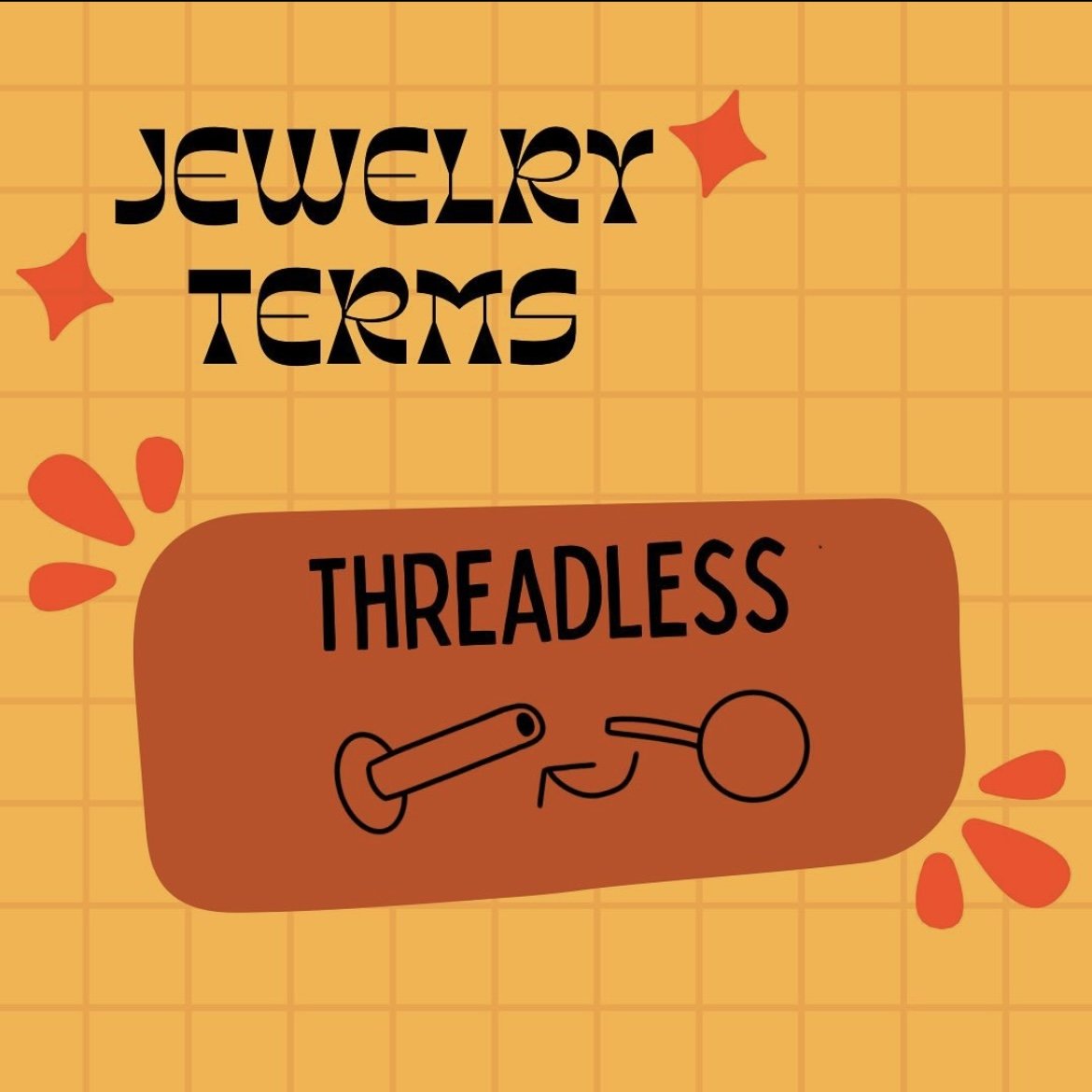
Threadless or Push Pin style of jewelry is when the jewelry is held together by tension rather than threading. Tops have a single prong which are bent slightly in order to create tension when inserted. There are a lot of pros for threadless jewelry: • User friendly (easier to remove/install yourself) • Tops and posts do not need to be the same gauge • Less likely to loosen over time However, there are some limitations to threadless jewelry. There are gauge limits, as most companies make threadless jewelry only up until 12g. Threadless pins can wear down and snap over time if being taken out and re-bent consistently. Here at Honeycomb, we only carry implant grade titanium posts for all of our threadless jewelry, with a wide variety of tops to choose from!
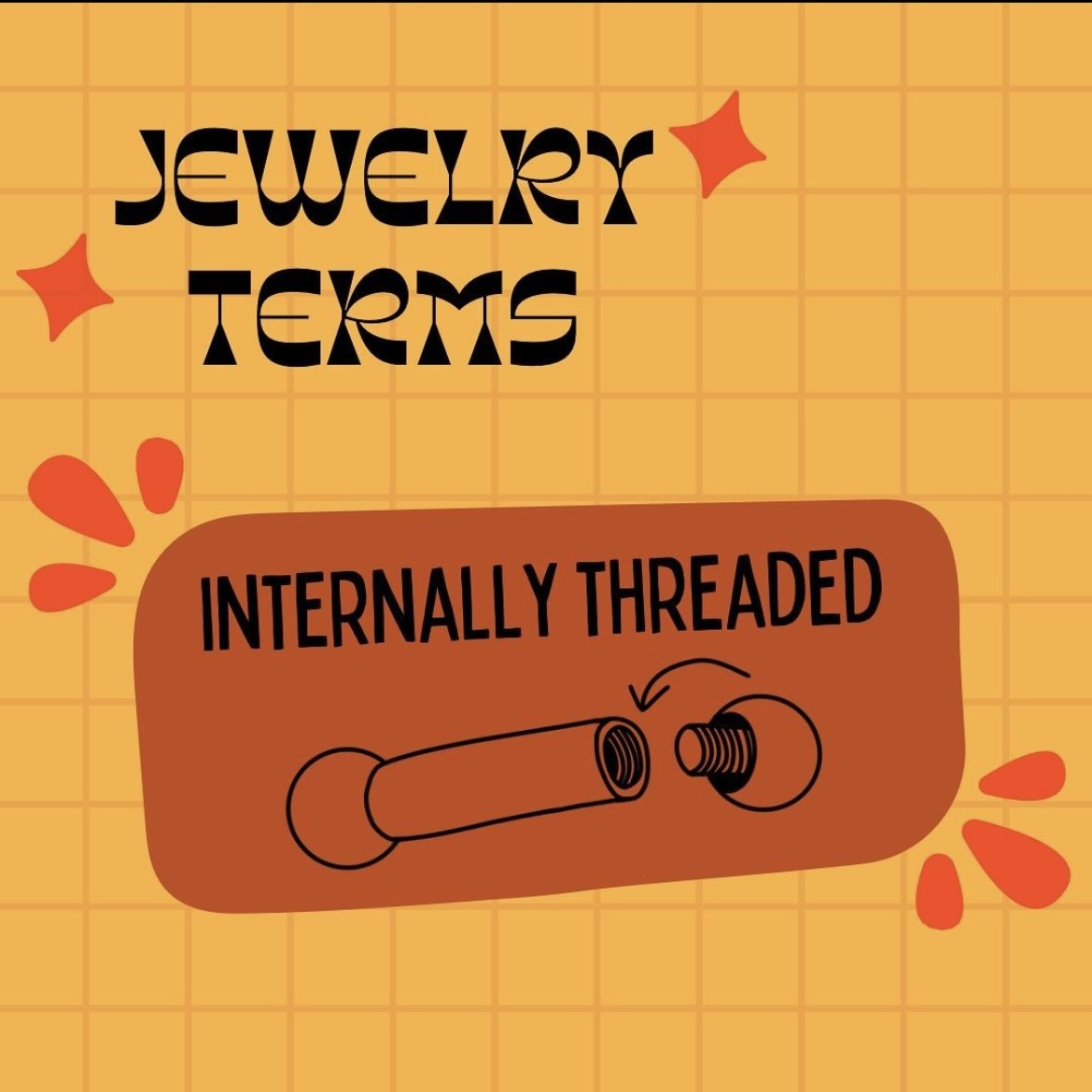
Internally threaded jewelry is a style in which the post has threading on the inside, with tops that will thread into it. This style is a much safer option than externally threaded as it goes in smoothly into the piercing channel. There are many pros for threaded jewelry: • Great for larger gauge pieces • Offers strong stability in holding big/heavy tops • Often made with body safe material (Always double check the companies, it’s not a given) However for threaded pieces, they’re not universal in gauges, as a 16g post could only hold a 16g threaded top. As for most pieces, the threading from the top needs to fit that specific size post, or share the same thread pattern (For example, 14g and 12g have the same thread pattern). Here at Honeycomb, we carry internally threaded jewelry in materials such as implant grade titanium and steel, all to make sure our clients have the best and safest options

A captive bead ring is a ring that has a bead that pops right into it, these are great to start off with for initial piercing! The bead has indents on the sides that lock into the ring through tension. Starting off with a captive bead ring allows you to have the look of a ring, without worry of a seam opening in your piercing channel. Captive bead rings may seem simple, but there are so many options to adorn your ring! Here at Honeycomb we carry onyx, jade, opal, and turquoise beads you can add to your ring for some added pizzazz
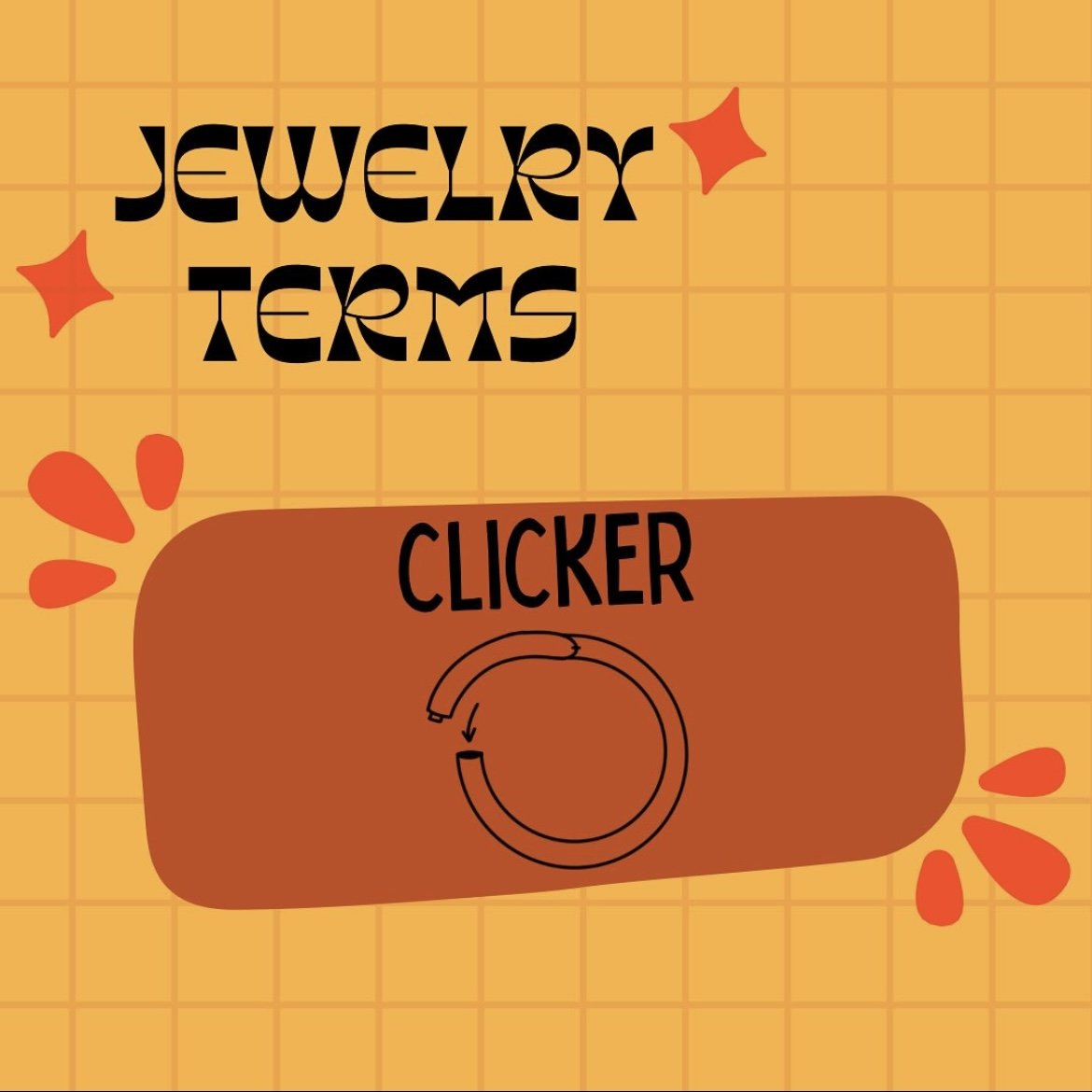
A clicker is a ring that opens/closes through a hinge. This type of jewelry is best suited for healed piercings, as similar with the seam ring, the chance of the piercing channel growing over the hinge can irritate fresh piercings. Clickers are very user friendly, and a great option for piercings you may need to be able to take jewelry out for often. The hinge makes it so the jewelry won’t become warped over time with constant taking in and out. Here at Honeycomb, we carry clickers in implant grade titanium, and though we don’t often carry 14k solid gold clickers, we are always open to take an order!

A seam ring is a ring that torques open, and is a great option if you want to keep a ring in long term. You open it by twisting up, similar to how you’d open a ketchup packet! While it is not recommended to pierce with a seam ring as the chance of the seam opening in the piercing channel is too high to risk, seam rings are a great way to update your look when piercings are healed! These rings are best for long term wear, as constantly opening the ring can cause it to weaken over time and warp. Seam rings are great options for lobe, helix, and nostril piercings when fully healed! At Honeycomb, we carry seam rings in implant grade titanium, niobium, and 14k solid gold!

A labret stud is a post with a flat back fixed onto it to create a more comfortable wear for the user. This style can be either threaded or threadless, ranging in metals like implant grade titanium, steel, and sometimes even gold! This was originally made for the purpose of labret piercings (lip) hence the name labret stud. Past its origin, labret studs can be used in any piercing that can hold a stud, such as lobes, helix, nostril, and many more. While styles of jewelry can indicate quality (like internally versus externally), it’s always best to double check where your piercer is purchasing their labret studs! Fun fact: The /t/ in labret is not silent! But however you say it, we’ll know what you’re talking about
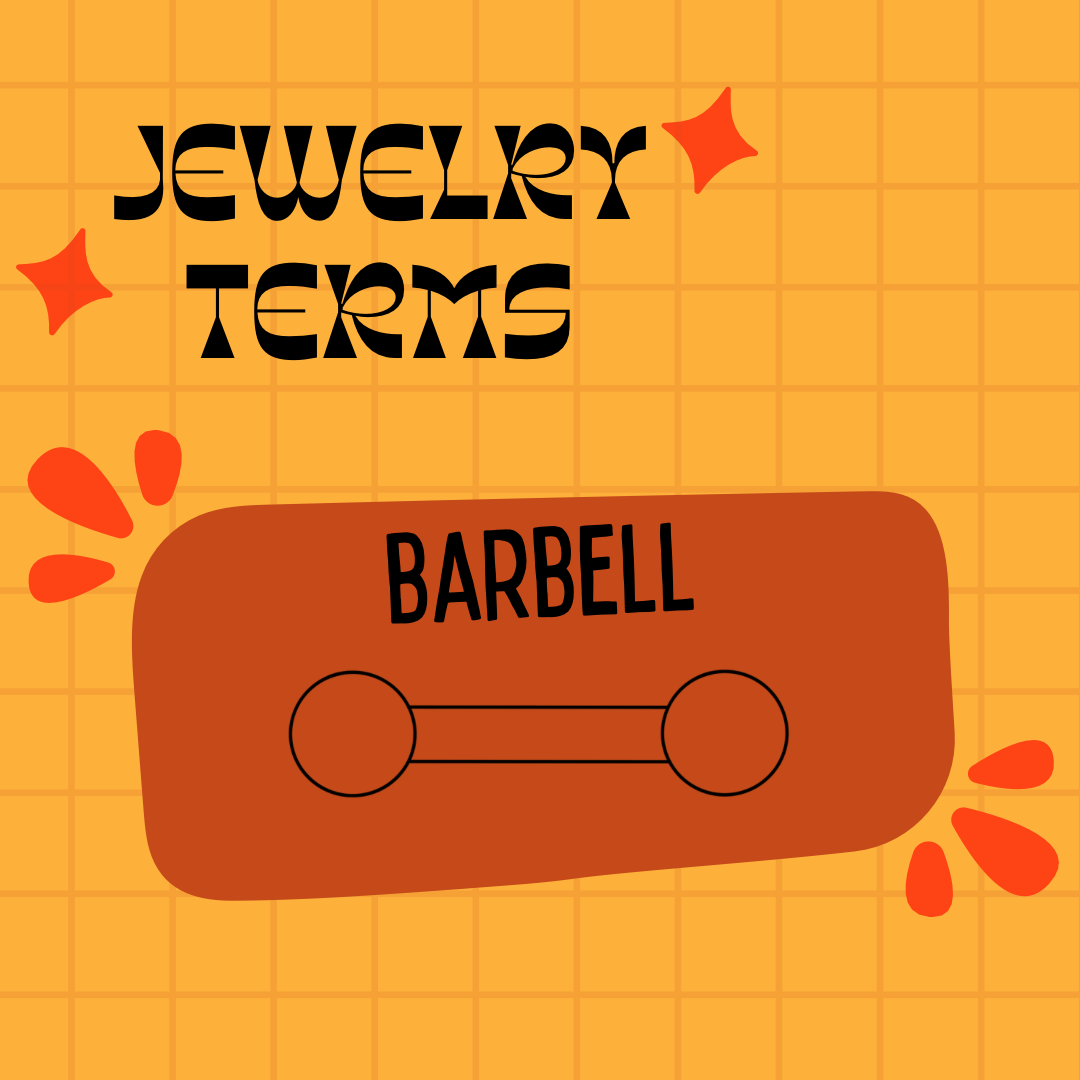
The barbell is a classic staple in the piercing industry! Barbell jewelry is made up of a single bar post that has inserts on the sides for beads, spikes, tops, etc. Barbells can be made in styles like treadless or internally threaded jewelry. We recommend you stay away from using externally threaded barbells, as the threading on the bar will have contact with your piercing channel that cause irritation, and generally externally threaded jewelry are not made up of body safe materials. The classic barbell with beads has been around for a long time, with its origins used by tribal people such as the Dayak of Borneo, to the popularization in the west in the 1960's by Jim Ward, the founder of Gauntlet. Barbells have been used in all types of piercings, however with more modern forms of jewelry we now use barbells for more specific piercings such as the bridge, industrial, and nipples. At Honeycomb, we carry both internally threaded and treadless barbells in metals such as implant grade titanium, with plenty of ends to choose from!
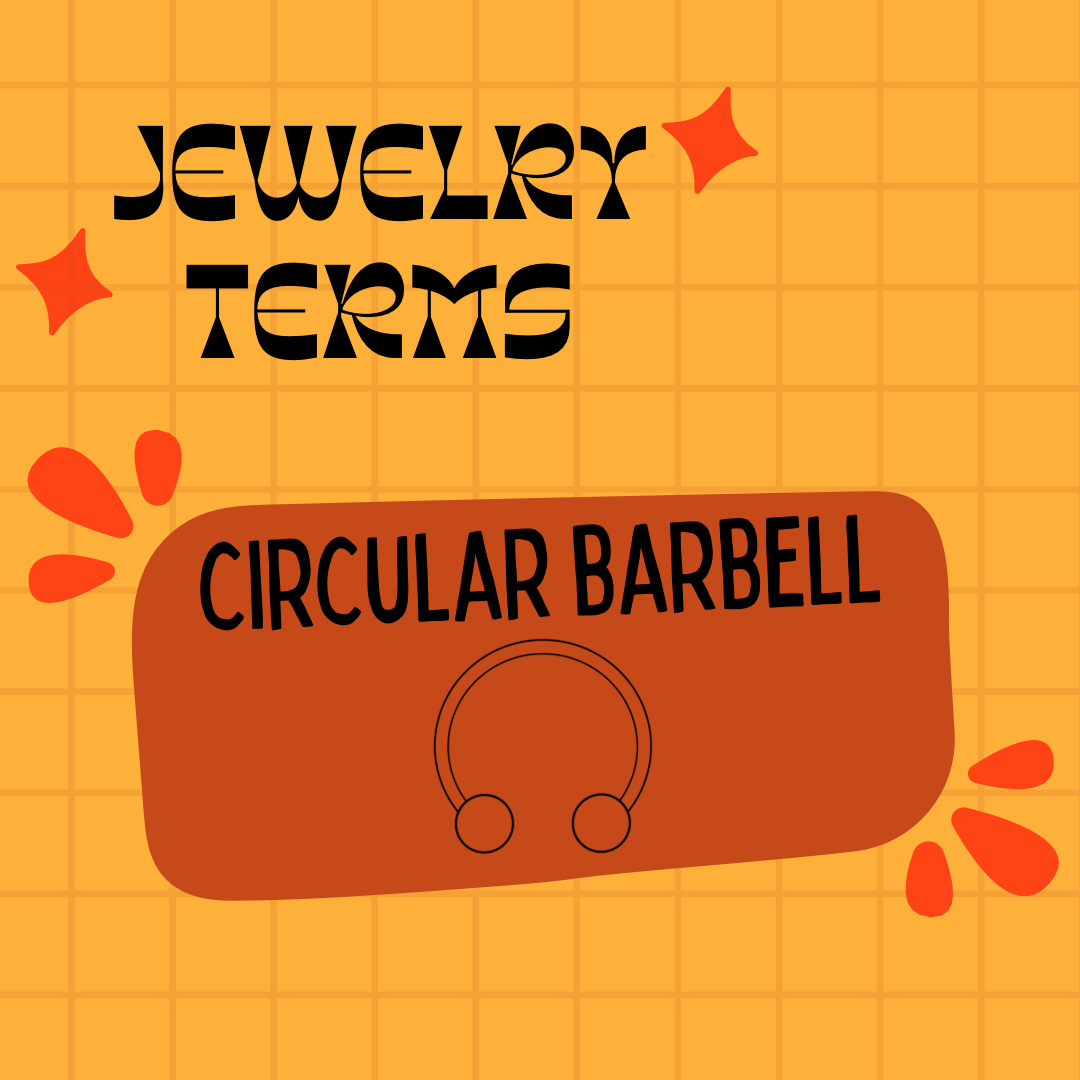
The circular barbell, or more popularly known as the horseshoe, is a style of jewelry used for a variety of piercings but is most commonly associated with the septum piercing. The circular shape allows for a look of a ring without it being fully closed, with either threaded or threadless ends such as beads. Circular barbells can be installed in most piercing that allows for rings, such as daith, lip, lobes, and of course, septum piercings. At Honeycomb, we carry both internally threaded and threadless circular barbells, in metals such as implant grade titanium, implant grade steel, and a few 14k solid gold!

Gauge refers to the measurement of thickness of a piece of jewelry, which matters especially when buying new jewelry! Gauge measurements are in millimeters and inches, often most referred to in the US using inch fractions past the size of 00g. As piercers, we don’t expect clients to know the gauge of their jewelry so don’t sweat if you can’t remember! While there are typical gauge sizes associated with certain piercings, for example nostrils are typically pierced at an 18g, it’s always best for your piercer to double check what size you’re at using a gauge wheel. Often times, people refer to plugs for gauged ears as “gauges,” and to be honest, who cares! If a piercer knows what you mean the terminology doesn’t really matter. If anyone tries to “um, actually” you, tell them to kick rocks! (metaphorically!) Certain gauges are best for certain piercings, like having either a 16g or 14g for cartilage piercings is better than using an 18g, as a thicker gauge offers better stability during healing. You can always switch to a thinner gauge after the initial healing process is finished.

Diameter in piercing is how we define the size of rings, specifically the length on the inside of a ring. Piercers use both metric and non metric language when we discuss the sizes of jewelry, as there is not a “one size fits all” when it comes to piercing! Most piercers aren’t going to expect you to know what diameter you have or what size you’re looking for, and that’s okay! We have tools to measure the diameter, and can use marking rings (rings that are not meant for piercing and instead used as a visual aid to see what a ring would look like) to show you different examples of how the sizes will look on your piercing. Going to a reputable piercer to find the size you need is important, as most online retailers will give you a “standard” size that may not be compatible with your body. Having too small of a ring can cause indents on your body, and can lead to the ring digging into the tissue causing discomfort and irritation.